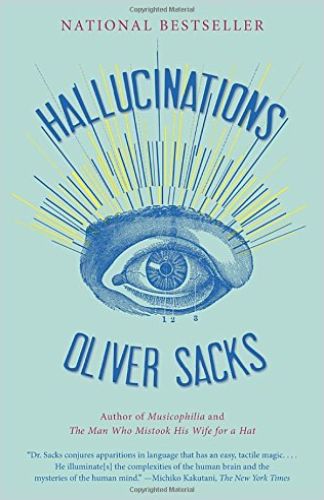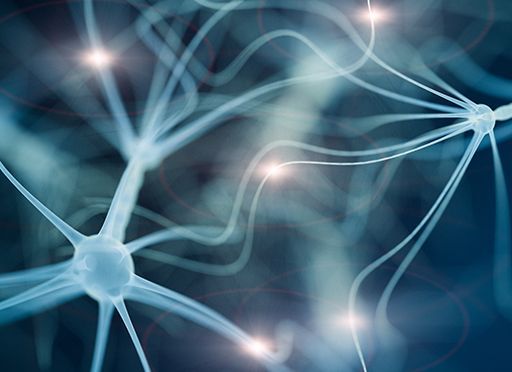Neurologist and bestseller Oliver Sacks explores visual and auditory hallucinations with his usual insight, compassion and boundless curiosity.

Seeing Things
Oliver Sacks, MD (1933–2015) – British neurologist, medical professor, and author of Awakenings, among many bestsellers – notes that hallucinations can manifest due to illness, drug use, spiritual practices, exhaustion, sensory deprivation and a host of other causes. Sacks finds them ubiquitous to human experience, yet unique to the people hallucinating. In this compassionate and accessible study, Sacks suggests underlying physiological reasons for common hallucinations, which, with his usual poetic outlook, he regards as testaments to human creativity.
The New York Times said Sacks “illuminate[s] the complexities of the human brain and the mysteries of the human mind.” The New York Times Book Review wrote, “One of the pleasures of reading Hallucinations is understanding how complex human reality often trumps attempts to categorize it.” And the Minneapolis Star Tribune found the book “humane, compassionate…These tales are at turns delightful, entertaining, bizarre and sometimes downright terrifying.”
Nonexistent Reality
Hallucinations seem so real to hallucinators, Sacks explains, they often experience shock when they realize nobody else perceives what they experience.
You are passive and helpless in the face of hallucinations; they happen to you autonomously. They appear and disappear when they please, not when you please.Oliver Sacks
Your mind projects hallucinations, Sacks found, onto the external world. What he calls pseudo-hallucinations arise during near-sleep states, and are internal – but vivid and uncontrollable, as are other hallucinations.
Unlike the top-down process of voluntary visual imagery, hallucination is the result of a direct, bottom-up activation of regions in the ventral visual pathway.Oliver Sacks
Sleep deprivation and dream deprivation lead to hallucination, Sacks shows, as can extreme exhaustion. Hallucinations share features of dreams and fantasy but, Sacks makes the distinction that they are unique phenomena of consciousness.
Traditionally, Sacks laments, doctors presumed patients’ hallucinating voices were schizophrenia. Patients often ascribe, Sacks learned, spiritual meaning to hearing voices, as when a familiar or authoritative voice speaks someone’s name. Sacks reveals that many poets, including, for example, Rainer Maria Rilke (1875–1926), regarded themselves as transcribers of a particular voice. Sacks also recounts how almost everyone talks to him- or herself.
Altered States
Sacks quotes William James’s The Varieties of Religious Experience, in which the psychologist described how alcohol and nitrous oxide can induce ecstatic states. All cultures, Sacks emphasizes, utilize intoxicants for religious rites, expanding consciousness or pleasure. Sacks lists certain effects of hallucinogens: heightened colors, exaggerated perspective or size, and altered perception of time.
Intrigued by accounts of various drug experiences, Sacks admits trying several. In 1965, for example, he took morphine and hallucinated the 1415 Battle of Agincourt between England and France on his sleeve in detail. When morphine’s effects faded, Sacks realized he’d sat motionless for 12 hours.
Migraine and Epilepsy
Sacks suffered migraines, and their neurological effects intrigued him – seeing shimmering lights, geometrical patterns and auras, after which many people get debilitating headaches, though he never did. More complex hallucinations, Sacks conveys, reflect billions of living cells creating patterns as they self-organize.
A complex pattern of activity operates at a basic cellular level, far beneath the level of personal experience. The hallucinatory forms are, in this way, physiological universals of human experience.Oliver Sacks
Joan of Arc, Sacks believes, likely suffered temporal lobe epilepsy and ecstatic fits. Her first vision, occurring at age 13, frightened her, but she accepted that God gave her a mission. Such seizures frequently, the author notes, correspond to growing religious zeal; epileptics without religious beliefs seem prone to mystical experiences.
Hypnagogic Images
Hypnagogic images lack narrative, and thus, Sacks proposes, differ from dreams. He cites, for example, hearing a phone ring before waking as a common auditory hallucination.
Few phenomena give such a sense of the brain’s creativity and computational power as the almost infinitely varied, ever-changing torrent of patterns and forms which may be seen in hypnagogic states.Oliver Sacks
Dreams are personal to the dreamer as, Sacks relates, dream narratives relate to daily life or to hopes and fears. While dreams occur in fragments and prove difficult to recall, Sacks describes hypnopompic hallucinations as vivid, startling and unforgettable. Sacks theorizes that accounts of monsters, devils, angels and spirits could stem from hypnopompic hallucinations. Reinforced by personal or social spiritual faith, the experiences might, he accepts, strengthen supernatural beliefs.
Sacks teaches that losing a loved one leaves a hole in your life and your brain tries to fill that hole – for example, as when amputees feel so-called phantom limbs. Many people report, he discloses, hearing the voice of a deceased loved one as if the person were in the next room.
Even at a more modest level, all of us are susceptible to the power of suggestion, especially if it is combined with emotional arousal and ambiguous stimuli.Oliver Sacks
Sacks tells how William James studied mediums who channel the voices and images of the dead and concluded the mystics weren’t consciously lying about their visions or auditory hallucinations; their changed state of consciousness led to the hallucinations. Ordinary people, James found, achieve a similar state through meditation, ecstatic dancing, prayer, and other spiritual exercises.
Unique
Over the course of his many bestsellers, Sacks established his identity as a learned, aware, insatiably curious, emotionally and intellectually fearless scribe of the infinite permutations of human consciousness. His voice – wise, bemused, kind, compassionate – is always welcome. This volume proves especially compelling because Sacks experienced some of what he describes and because many different causes manifest hallucinations, thus giving Sacks a wide-ranging canvas on which to demonstrate his singular expertise. New readers may find this an excellent place to discover the treasure that is Oliver Sacks and his many fans will embrace this volume with gratitude.
Oliver Sacks’s groundbreaking bestsellers include The Man Who Mistook His Wife for a Hat; Gratitude; Awakenings; On the Move; Seeing Voices; The Mind’s Eye; and A Leg to Stand On.





